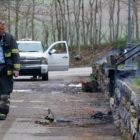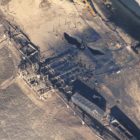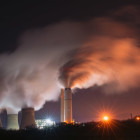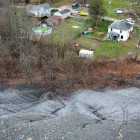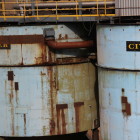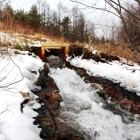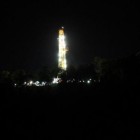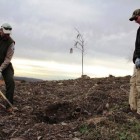Audio
Pipeline Building Boom Raises Safety Concerns
|
On the morning of April 29, a natural gas transmission line exploded in a field in Salem Township in western Pennsylvania. The blast was so powerful it ripped a 12-foot crater into the landscape, burned a section of the field with a quarter-mile radius and threw a 25-foot section of the 30-inch steel pipeline 100 feet away. At the time of the explosion, a 26-year-old man was in his house, a few hundred feet away. He was badly burned, and his home destroyed. When local fire chief Bob Rosatti arrived at the scene, the flames were so hot, he had to stay in his truck. “They were massive—I would say 300 feet at the least,” Rosatti says. “That was the biggest fireball I’d ever seen in my life.

